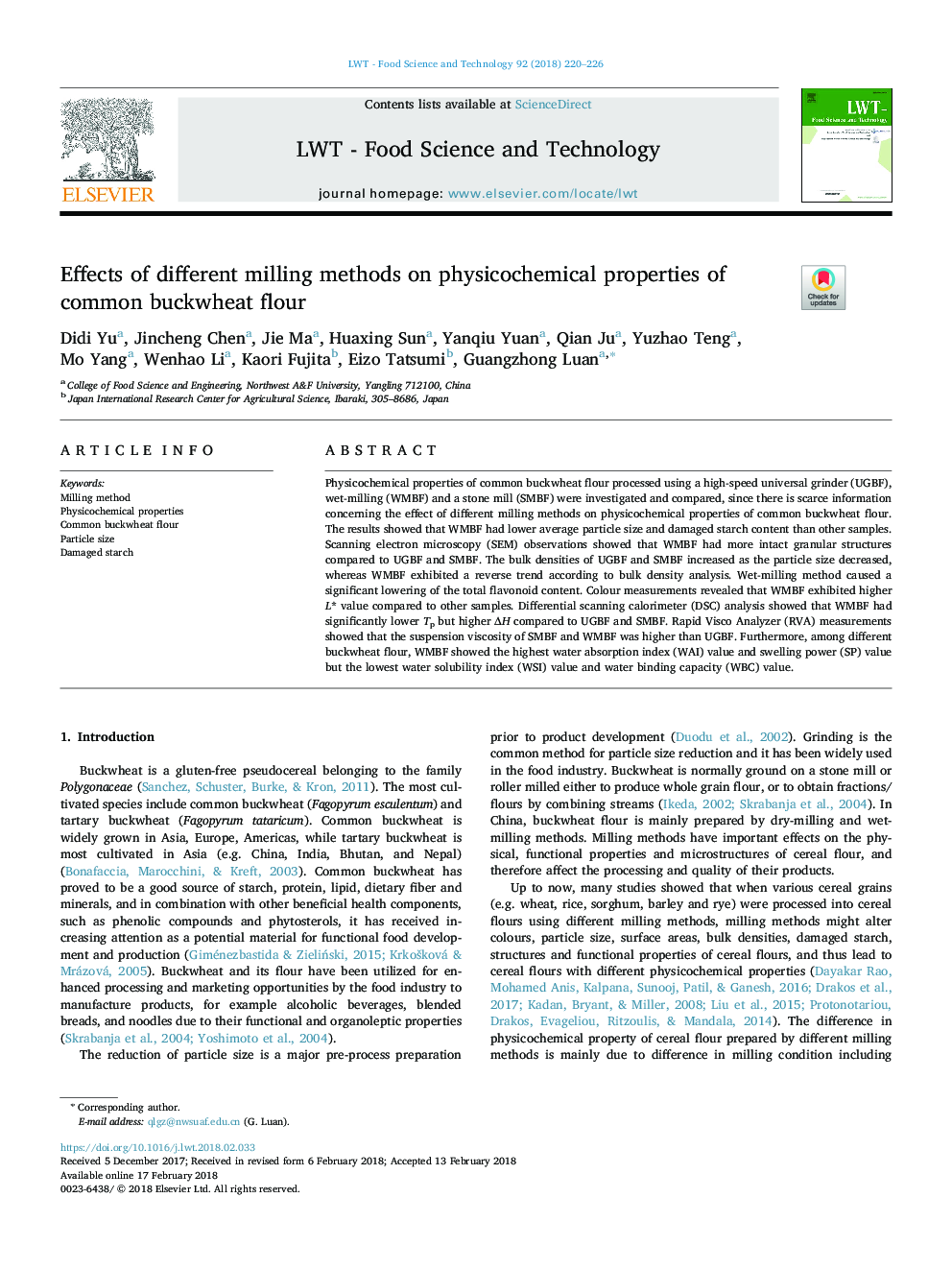| Article ID | Journal | Published Year | Pages | File Type |
|---|---|---|---|---|
| 8891243 | LWT - Food Science and Technology | 2018 | 7 Pages |
Abstract
Physicochemical properties of common buckwheat flour processed using a high-speed universal grinder (UGBF), wet-milling (WMBF) and a stone mill (SMBF) were investigated and compared, since there is scarce information concerning the effect of different milling methods on physicochemical properties of common buckwheat flour. The results showed that WMBF had lower average particle size and damaged starch content than other samples. Scanning electron microscopy (SEM) observations showed that WMBF had more intact granular structures compared to UGBF and SMBF. The bulk densities of UGBF and SMBF increased as the particle size decreased, whereas WMBF exhibited a reverse trend according to bulk density analysis. Wet-milling method caused a significant lowering of the total flavonoid content. Colour measurements revealed that WMBF exhibited higher L* value compared to other samples. Differential scanning calorimeter (DSC) analysis showed that WMBF had significantly lower Tp but higher ÎH compared to UGBF and SMBF. Rapid Visco Analyzer (RVA) measurements showed that the suspension viscosity of SMBF and WMBF was higher than UGBF. Furthermore, among different buckwheat flour, WMBF showed the highest water absorption index (WAI) value and swelling power (SP) value but the lowest water solubility index (WSI) value and water binding capacity (WBC) value.
Related Topics
Life Sciences
Agricultural and Biological Sciences
Food Science
Authors
Didi Yu, Jincheng Chen, Jie Ma, Huaxing Sun, Yanqiu Yuan, Qian Ju, Yuzhao Teng, Mo Yang, Wenhao Li, Kaori Fujita, Eizo Tatsumi, Guangzhong Luan,
